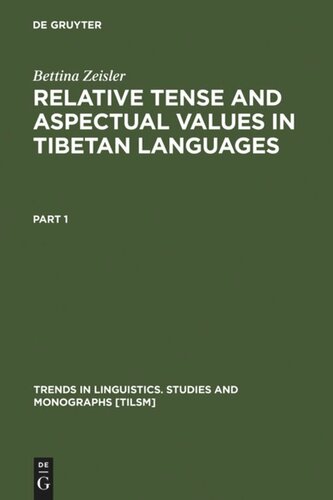

Most ebook files are in PDF format, so you can easily read them using various software such as Foxit Reader or directly on the Google Chrome browser.
Some ebook files are released by publishers in other formats such as .awz, .mobi, .epub, .fb2, etc. You may need to install specific software to read these formats on mobile/PC, such as Calibre.
Please read the tutorial at this link: https://ebookbell.com/faq
We offer FREE conversion to the popular formats you request; however, this may take some time. Therefore, right after payment, please email us, and we will try to provide the service as quickly as possible.
For some exceptional file formats or broken links (if any), please refrain from opening any disputes. Instead, email us first, and we will try to assist within a maximum of 6 hours.
EbookBell Team

0.0
0 reviewsThis study presents a comparative approach to a universal theory of TENSE, ASPECT and MOOD, combining the methods of comparative and historical linguistics, fieldwork, text linguistics, and philology. The parts of the book discuss and describe (i) the concepts of TENSE, ASPECT and MOOD; (ii) the Tibetan system of RELATIVE TENSE and aspectual values, with main sections on Old and Classical Tibetan, “Lhasa” Tibetan, and East Tibetan (Amdo and Kham); and (iii) West Tibetan (Ladakhi, Purik, Balti); Part (iv) presents the comparative view.
Discussing the similarities and differences of temporal and aspectual concepts, the study rejects the general claim that ASPECT is a linguistic universal. A new linguistic concept, FRAMING, is introduced in order to account for the aspect-like conceptualisations found in, e.g., English. The concept of RELATIVE TENSE or taxis, may likewise not be universal.
Among the Tibetan varieties, West Tibetan is unique in having fully grammaticalized the concept of ABSOLUTE TENSE. West Tibetan is compared diachronically with Old and Classical Tibetan (documented since the mid 8th century) and synchronically with several contemporary Tibetan varieties. The grammaticalized forms of each variety are described on the basis of their employment in discourse. The underlying general function of the Tibetan verbal system is thus shown to be that of RELATIVE TENSE. Secondary aspectual functions are described for restricted contexts. A special focus on the pragmatic or metaphorical use of present tense constructions in Tibetan leads to a typology of narrative conventions. The last part also offers some suggestions for the reconstruction of the Proto-Tibetan verb system.